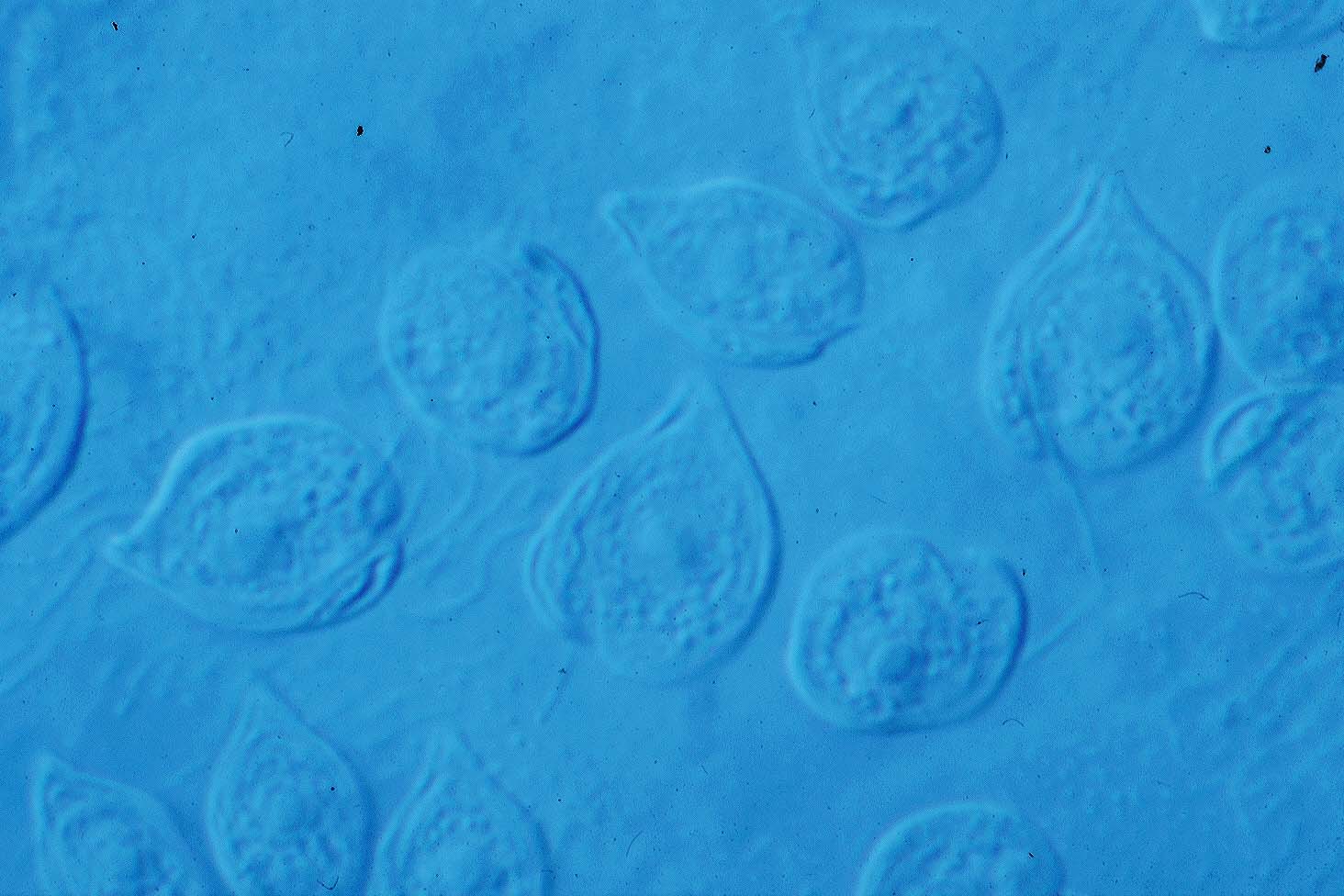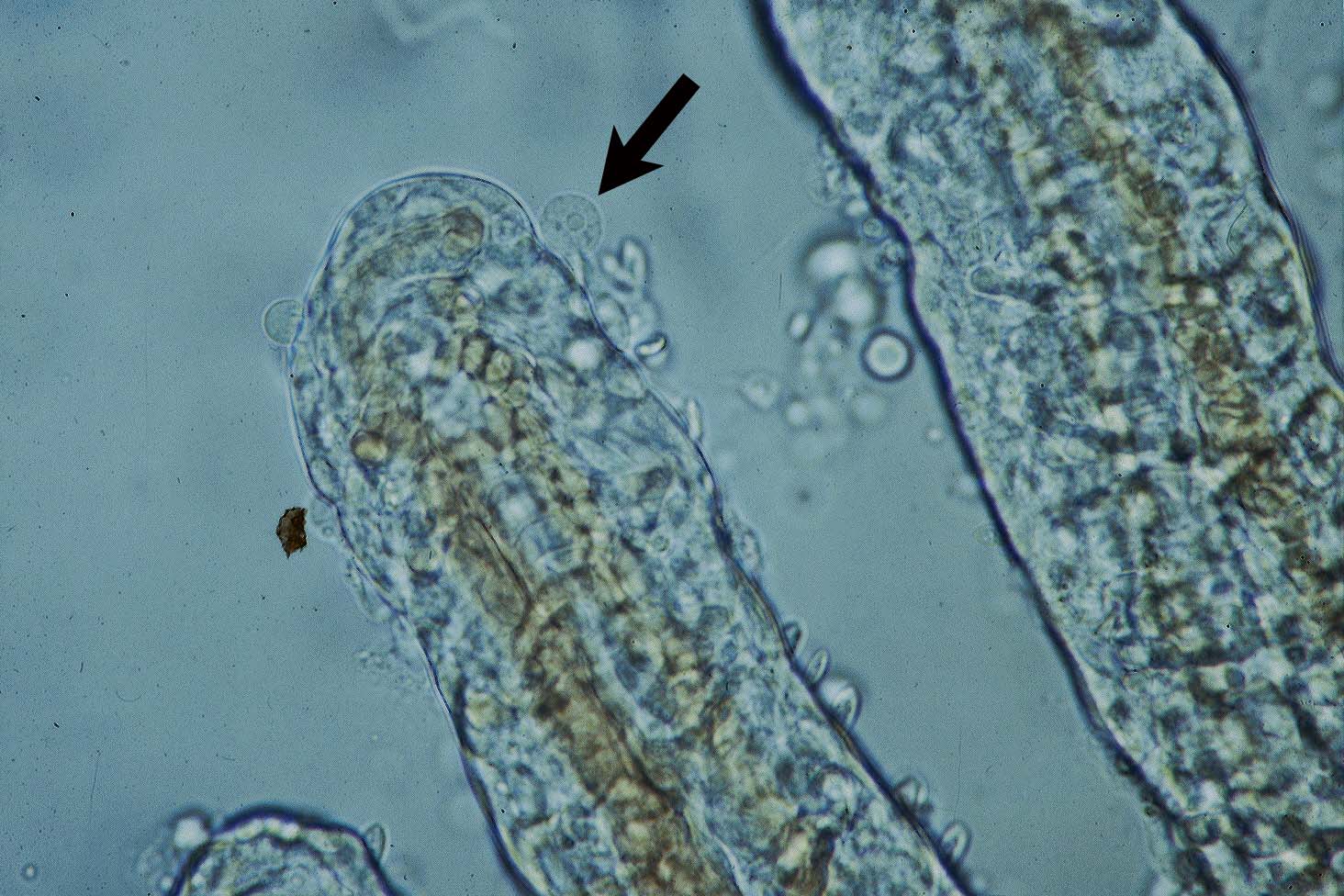


Fig. 2. I. necator (arrow) on the gill filament of masu salmon.

(Photos by Drs. S. Urawa and T. Awakura)
Fig. 3. Wet mount of I. necator.
Fig. 1. Haemorrhagic lesions caused by I. necator.
| Parasite | Ichthyobodo necator |
|---|---|
| Taxonomy | Sarcomastigophora, Ichthyobodonidae |
| Host | Salmonid fishes |
| Infection site | Skin, fin, gill |
| Clinical signs | Heavily infested fish exhibits anorexia and petechial haemorrhagic lesions in the skin (Fig. 1). The ectoparasite is observed by light microscopy (Fig. 2). |
| Parasitology | The parasite body is pyriform and 8-13 mm in size (Fig. 3). I. necator attaches on the host by the attachment plate and feeds by the cytostome and the cytopharyngeal canal protruding into the host cell (Lom and Dykova, 1992; Ogawa, 2004). The free, non-feeding form has an oval body and swims by 2 (rarely 4) unequal flagella. Though many Ichthyobodo which infect freshwater or marine fishes were described as Ichthyobodo necator, it was indicated by transmission experiments and gene analyses that most of them are different species from I. necator (Urawa et al., 1998; Todal et al., 2004; Isaksen et al., 2007). |
| Pathology | Epithelial or epidermal cells become necrotic followed by sloughing of them and haemorrhages. Gill filaments are fused. |
| Health hazard | Since this parasite is not infectious to human, it is harmless in food hygiene. |
| Diagnosis | Check the flagella in a wet-mount preparation. A morphological observation by the Diff-Quik stain and an analysis for SSU rDNA are needed for the identification to a species level (Isaksen et al., 2007). |
| Other information | A new control method using green tea extract and its active ingredient (a kind of catechin) is investigated because the pharmaceutical law in Japan prohibited the therapeutic use of formalin for food fish (Suzuki et al., 2006). |
| References | Isaksen, T. E., E.
Karlsbakk and A. Nylund (2007): Ichthyobodo
hippoglossi n. sp. (Kinetoplastea: Prokinetoplastida: Ichthyobodonidae fam.
nov.), an ectoparasitic flagellate infecting farmed Atlantic halibut Hippoglossus hippoglossus. Dis. Aquat. Org., 73, 207-217. Lom, J and I. Dykova (1992) Protozoan Parasites of Fishes, Developments in Aquaculture and Fisheries Science, 26, Elsevier, pp. 315. Ogawa, K. (2004): Protozoan diseases. Infectious and parasitic diseases of fish and shellfish. (ed. by Wakabayashi, H. and K. Muroga), Koseisha koseikaku, pp.285-338. Suzuki, K., N. Misaka and D. K. Sakai (2006): Efficacy of green tea extract on removal of the ectoparasitic flagellate Ichthyobodo necator from chum salmon, Oncorhynchus keta, and masu salmon, O. masou. Aquaculture, 259, 17-27. Todal, J. A., E. Karlsbakk, T. E. Isaksen, H. Plarre, S. Urawa, A. Mouton, E. Hoel, C. W. R. Koren and A. Nylund (2004): Ichthyobodo necator (Kinetoplastida) – a complex of sibling species. Dis. Aquat. Org., 58, 9-16. Urawa, S., N, Ueki and E. Karlsbakk (1998): A review of Ichthyobodo infection in marine fishes. Fish Pathol., 33, 311-320. |